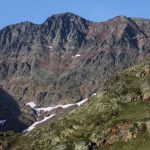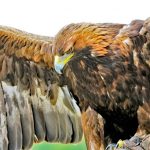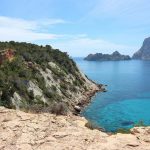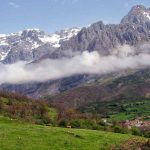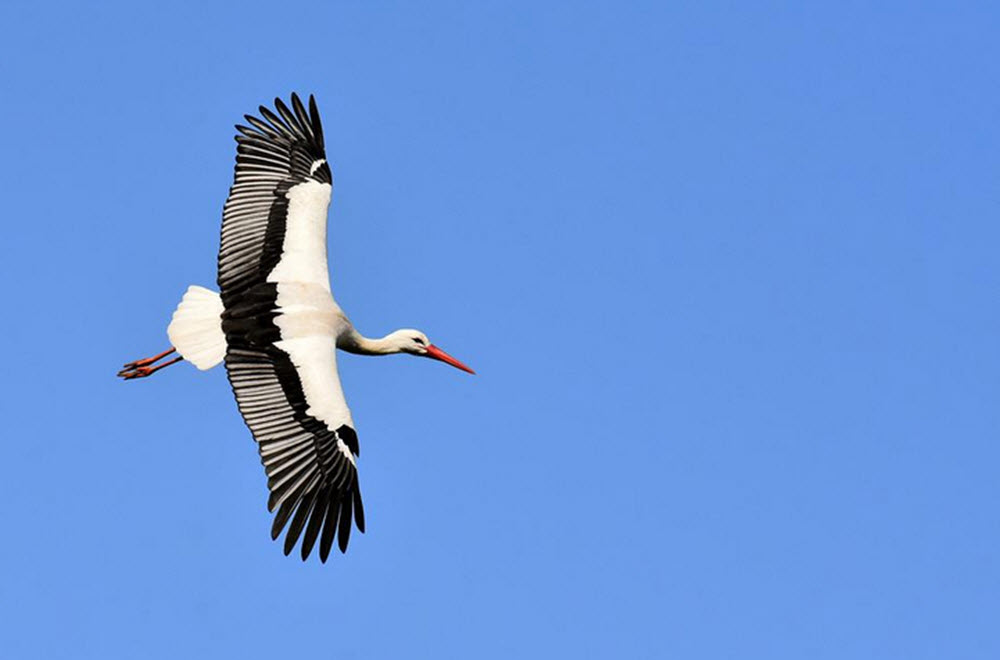Raptor and Stork migration across the Strait of Gibraltar
The phenomena of bird migration is a subject that has aroused human interest for hundreds of years and it is here, along the Strait of Gibraltar, where the African and European continents almost meet and where two seas, the Mediterranean and the Atlantic Ocean, merge together, that this bi-annual spectacle of bird activity can best be observed.
Birds migrate for two reasons: to reach their breeding grounds in Europe and to return to their wintering sites in the warmer climates of Africa and beyond. The Strait of Gibraltar offers the shortest sea crossing between these two continents (about 15 kms at the narrowest point) and the legendary twin Pillars of Hercules, Mount Abyla in Morocco and Calpe, the Rock of Gibraltar, are obvious landmarks for migrating birds.
The spring migration (northward) of storks, vultures, eagles, kites and other birds of prey, along with many smaller bird species takes place between January and May and is by far the most spectacular. Surprisingly, due to wing area to body weight ratio, many of the larger birds are not strong flyers, yet they undertake journeys of several thousand kilometres. They achieve this by employing a means of flight known as soaring and gliding. This method involves finding updrafts of hot air over the land (thermals) and using these to soar upward in spirals until they reach great heights. They will then level off and attempt to glide for as far as possible before finding another thermal. As there are no thermals over the sea, the birds gradually lose altitude during the crossing from Africa and very often, especially in unfavourable wind conditions, reach the Spanish coast at very low levels, sometimes having to flap their wings frantically to avoid landing in the water and also to rise over the coastal cliffs. This event can often produce wonderful close-up views for the assembled birdwatchers.
Once back over land the birds will again search for thermals and circle upwards, sometimes in flocks several hundred strong, until they again level off and glide away on their journeys. Some of these birds will remain in Spain to breed, but many others will travel on to Portugal, France and as far north as Scandinavia.
If these larger birds arrive late in the evening they will not normally continue their journeys until the following day when the temperature rises and thermals form. Instead, they will find roosting sites and rest overnight before continuing. When this occurs you may be lucky enough to see hundreds of birds settling down in woods and forests, just inland.
Obviously, birds that rely on soaring and gliding flight are somewhat affected by the strength and direction of the prevailing wind and any planned visit to watch the spring migration should take these factors into consideration. On calm days most of the larger birds will cross the Spanish coast near to the town of Tarifa (the shortest sea crossing) and any site in the Montes de Tarifa or along Los Lances beach can prove advantageous. If there are westerly winds (toward Malaga) the birds will drift to the east and you should plan to visit suitable sites such as the Rio Palmones estuary, the hills above Los Barrios, Punta Carnero/Punta Secreta or Gibraltar. In easterly winds (toward Cadiz) your viewing chances will be enhanced by traveling further west of Tarifa to the Valle de Santuario, Bolonia or even further.
Notable exceptions to this rule are the Honey Buzzards. Although they too employ soaring and gliding flight they are also very strong flyers and may cross the coast at any point regardless of wind direction. Up to 125,000 Honey Buzzards cross the strait in spring, usually in a short period between late April and mid-May.
The smaller migratory birds: finches, warblers, swallows, swifts, martins, etc. are much stronger flyers and do not rely on soaring and gliding flight. These tend to cross the coast at far greater heights and are often much harder to see. Also, many of the smaller species make their sea crossings at night so it is hard to calculate correctly how many birds actually cross the strait, although it is estimated by experts that the number is in the millions.
In late July the southward migration begins and usually lasts through to October / November, but without doubt the optimum time for bird of prey movement is during late August and September. The birds are returning to their wintering sites bringing with them the young birds, which having been raised during the breeding season, are on their first migration. These young birds will remember the route and will be able to make the journey back north the following spring.
For people planning to watch during this migration period the choice of sites is so much easier. The vast majority of raptors and storks will leave Europe from a relatively small area around the town of Tarifa. The prime site, as far as I am concerned, is Cazalla, a hillside viewpoint in the Montes de Tarifa, just to the north-east of the town. This position gives you excellent views of the strait, the town, the Moroccan coastline and the mountain flyways used by the birds for their approach. Most of the raptors will converge at this point to start the sea crossing and in September 2001, I counted over 500 Booted Eagles and almost 150 Short-toed Eagles in one day, along with varying numbers of Honey Buzzards, Sparrowhawks, Lesser Kestrels, Montagu’s Harriers, Griffon and Egyptian Vultures, Black Kites and both Black and White Storks.
Numerous Spanish and European rarities are often recorded during this period and recent sightings have included Ruppell’s Vultures, Spotted and Lesser Spotted Eagles, Lammergeiers, Long-legged Buzzards, White Pelicans and Eleanora’s, Lanner and Red-footed Falcons.
A network of bird observatories has been created at strategic points throughout this region, some coastal and some inland, which are manned by Sociedad Espanola de Ornitologia (S.E.O.) workers and volunteer recorders during the peak migration periods, and an annual report of these records is produced jointly by the SEO and the Consejeria de Medio Ambiente de la Junta de Andalucia (A.M.A.).
Most of the observatories are a simple, semi-circular, covered construction of concrete and stone with bench seating and a table. Unfortunately they are open on all sides and offer no protection against the strong wind that often affects the area. However, on calmer days they do provide some comfort for your raptor watching.
My favourite site at Cazalla, in the Montes de Tarifa, can be easily reached from the main N-340 highway by turning inland on to a track a few metres before the km. 87 marker. The track leads uphill to a large, white flat-roofed building where you can park and watch the birds.
There is an ornithological centre (Estacion Ornitologia de Tarifa) just on the landward side of the N-340 at km. 78.5 where directions to the other observation points can be obtained. If the centre is open you will also be able to get other useful information about the area from the staff.
Note: Parts of this text have been reproduced from John Butler’s book “Birdwatching on Spain’s Southern Coast”.

